Montgomery County
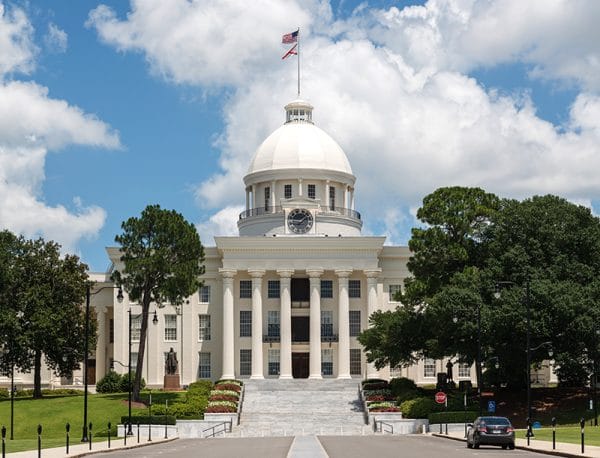 Alabama State Capitol Building
Located in the south-central part of the state, Montgomery County is the seat of state government. The city of Montgomery, now the state capital, is often referred to as the Cradle of the Confederacy because it briefly served as the first capital of the Confederate States of America in 1861. In the mid-twentieth century, Montgomery became the birthplace of the nation’s civil-rights movement when Rosa Parks refused to give up her seat to a white passenger on a city bus. Montgomery County evolved from an economy reliant upon cotton to a modern diversified economy that includes the automotive industry and military bases. Montgomery County is governed by an elected five-member commission and includes two incorporated communities.
Alabama State Capitol Building
Located in the south-central part of the state, Montgomery County is the seat of state government. The city of Montgomery, now the state capital, is often referred to as the Cradle of the Confederacy because it briefly served as the first capital of the Confederate States of America in 1861. In the mid-twentieth century, Montgomery became the birthplace of the nation’s civil-rights movement when Rosa Parks refused to give up her seat to a white passenger on a city bus. Montgomery County evolved from an economy reliant upon cotton to a modern diversified economy that includes the automotive industry and military bases. Montgomery County is governed by an elected five-member commission and includes two incorporated communities.
- Founding Date: December 6, 1816
- Area: 793 square miles
- Population: 228,954 (2020 Census estimate)
- Major Waterways: Alabama River, Tallapoosa River
- Major Highways: I-65, I-85, U.S. Highways 31, 231, 331, 80, and 82
- County Seat: Montgomery
- Largest City: Montgomery
History
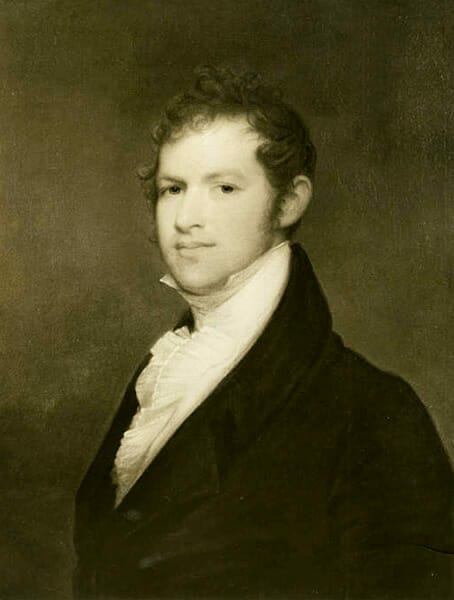 Andrew Dexter
Montgomery County was created by an act of the Mississippi Territorial Legislature on December 6, 1816. The county was named in honor of Maj. Lemuel Montgomery of Tennessee, who was the first U.S. soldier killed in the Battle of Horseshoe Bend during the Creek War of 1813-14. The city of Montgomery is the county seat and was selected as the state’s permanent capital in 1846. The county was carved out of Monroe County and originally encompassed most of central Alabama. It was later subdivided into Elmore, Bullock, and Crenshaw Counties. The act that created Montgomery County provided that its courts were to meet initially at Fort Jackson, located at the confluence of the Coosa and Tallapoosa Rivers and site of the surrender of the Creek Indians to Gen. Andrew Jackson, in present-day Elmore County. The courts met there only until June 1818, after which they met in nearby Alabama Town, founded by Gen. John Scott, who with several other migrants from Georgia founded the town on the bluff of the Alabama River. The men abandoned it when a group from New England, led by Andrew Dexter, founded a nearby town in what is now the downtown area of Montgomery and named it New Philadelphia. Scott and his companions then built a new town they called East Alabama. Seeing themselves as rivals, the citizens of East Alabama contemptuously referred to New Philadelphia as Yankee Town. The bitter rivalry ended, however, when the towns merged on December 3, 1819, and incorporated as the city of Montgomery, just prior to Alabama being admitted as a state.
Andrew Dexter
Montgomery County was created by an act of the Mississippi Territorial Legislature on December 6, 1816. The county was named in honor of Maj. Lemuel Montgomery of Tennessee, who was the first U.S. soldier killed in the Battle of Horseshoe Bend during the Creek War of 1813-14. The city of Montgomery is the county seat and was selected as the state’s permanent capital in 1846. The county was carved out of Monroe County and originally encompassed most of central Alabama. It was later subdivided into Elmore, Bullock, and Crenshaw Counties. The act that created Montgomery County provided that its courts were to meet initially at Fort Jackson, located at the confluence of the Coosa and Tallapoosa Rivers and site of the surrender of the Creek Indians to Gen. Andrew Jackson, in present-day Elmore County. The courts met there only until June 1818, after which they met in nearby Alabama Town, founded by Gen. John Scott, who with several other migrants from Georgia founded the town on the bluff of the Alabama River. The men abandoned it when a group from New England, led by Andrew Dexter, founded a nearby town in what is now the downtown area of Montgomery and named it New Philadelphia. Scott and his companions then built a new town they called East Alabama. Seeing themselves as rivals, the citizens of East Alabama contemptuously referred to New Philadelphia as Yankee Town. The bitter rivalry ended, however, when the towns merged on December 3, 1819, and incorporated as the city of Montgomery, just prior to Alabama being admitted as a state.
 Montgomery County Courthouse
The city of Montgomery prospered and became the county seat in 1822 and Alabama’s permanent capital in 1846. Although it bears the same name as the county, the city was named in honor of a different person, Maj. Gen. Richard Montgomery, who lost his life in the Revolutionary War in the assault against Quebec. The city and the county of Montgomery have been the site of many firsts, with the distinction of being known as the birthplace of the both the Civil War and the civil-rights movement. On February 18, 1861, Jefferson Davis was sworn in as the president of the Confederate States of America in its initial capital of Montgomery. It was from Montgomery that a telegram was sent to authorize the bombardment of Fort Sumter in Charleston Harbor, thus commencing the Civil War. Ninety-four years later, on December 1, 1955, Montgomery played host to a defining event in the birth of the civil-rights movement when Rosa Parks refused to give up her seat to a white passenger on a Montgomery city bus. Ten years later Martin Luther King Jr. ended the Selma-to-Montgomery March for voting rights with a speech delivered from the state capitol grounds. The Civil Rights Memorial and Memorial Center, located across Washington Avenue from the headquarters of the Southern Poverty Law Center, commemorates people who lost their lives during the civil rights movement.
Montgomery County Courthouse
The city of Montgomery prospered and became the county seat in 1822 and Alabama’s permanent capital in 1846. Although it bears the same name as the county, the city was named in honor of a different person, Maj. Gen. Richard Montgomery, who lost his life in the Revolutionary War in the assault against Quebec. The city and the county of Montgomery have been the site of many firsts, with the distinction of being known as the birthplace of the both the Civil War and the civil-rights movement. On February 18, 1861, Jefferson Davis was sworn in as the president of the Confederate States of America in its initial capital of Montgomery. It was from Montgomery that a telegram was sent to authorize the bombardment of Fort Sumter in Charleston Harbor, thus commencing the Civil War. Ninety-four years later, on December 1, 1955, Montgomery played host to a defining event in the birth of the civil-rights movement when Rosa Parks refused to give up her seat to a white passenger on a Montgomery city bus. Ten years later Martin Luther King Jr. ended the Selma-to-Montgomery March for voting rights with a speech delivered from the state capitol grounds. The Civil Rights Memorial and Memorial Center, located across Washington Avenue from the headquarters of the Southern Poverty Law Center, commemorates people who lost their lives during the civil rights movement.
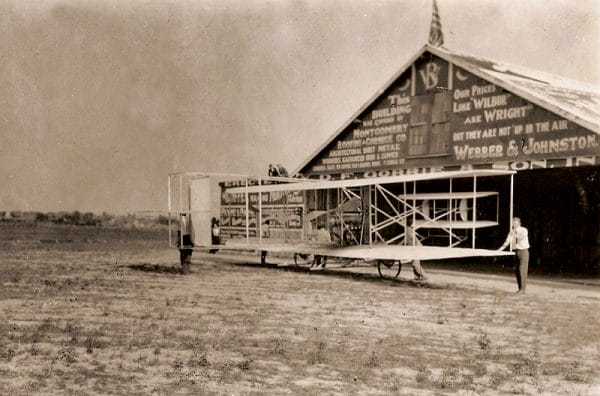 Wright’s Field
Technological firsts were also achieved in Montgomery County. In 1886, the nation’s first electric streetcar system was put into operation in Montgomery, and in 1910 the Wright Brothers founded the first flight school for aviators at a site near the Alabama River that would later become Maxwell Air Force Base. Orville Wright recorded the first powered flight in Alabama’s history, the local press reporting that “a strange new bird soared over the cotton fields to the west of Montgomery, on March 26, 1910.” This site later became an aviation repair depot and eventually evolved into a full-scale air base that today is home to Air University, the U.S. Air Force’s center for professional military education.
Wright’s Field
Technological firsts were also achieved in Montgomery County. In 1886, the nation’s first electric streetcar system was put into operation in Montgomery, and in 1910 the Wright Brothers founded the first flight school for aviators at a site near the Alabama River that would later become Maxwell Air Force Base. Orville Wright recorded the first powered flight in Alabama’s history, the local press reporting that “a strange new bird soared over the cotton fields to the west of Montgomery, on March 26, 1910.” This site later became an aviation repair depot and eventually evolved into a full-scale air base that today is home to Air University, the U.S. Air Force’s center for professional military education.
Major Cities and Demographics
According to 2020 Census estimates, the population of Montgomery County was 228,954. Of that total, 57.9 percent identified themselves as African American, 34.7 percent as white, 3.5 percent as Hispanic, 3.1 percent as Asian, 2.8 percent as two or more races, and 0.2 percent as Native American. The county seat and state capitol Montgomery is the largest city within the county with an estimated population of 199,054. Other significant population centers are Pike Road and Pine Level. The median household income was $51,963 compared with $52,035 for the state as a whole, and the per capita income was $29,543 compared with $28,934 for the state as a whole.
Economy
 Lehman, Durr & Co., ca. 1874
The advent of the steamboat, the relocation of the state capital from Tuscaloosa, and the cotton trade spurred Montgomery County’s antebellum economy. From the county’s earliest days, cotton production was its most important local industry, with the first commercial cotton gin having been installed in the area at the beginning of the nineteenth century. Montgomery soon became an important port for shipping cotton from the region. In 1844, Henry Lehman, an immigrant from Germany, was lured by the potential of this economy and opened a small general store in the city of Montgomery. Six years later, brothers Emanuel and Mayer joined him, and they named the business Lehman Brothers. The Civil War disrupted the Lehmans’ business. When the war ended, the brothers moved north and concentrated their operations in New York, where they helped establish the Cotton Exchange. Their thriving business subsequently evolved into today’s global financial entity. Other businesses suffered from the effects of the Civil War, but the county’s economy began to rebound with the growth of the textile industry and the diversification of agricultural industries. Montgomery became, and still is, an important processing and shipping center for cotton, dairy, and other farm products.
Lehman, Durr & Co., ca. 1874
The advent of the steamboat, the relocation of the state capital from Tuscaloosa, and the cotton trade spurred Montgomery County’s antebellum economy. From the county’s earliest days, cotton production was its most important local industry, with the first commercial cotton gin having been installed in the area at the beginning of the nineteenth century. Montgomery soon became an important port for shipping cotton from the region. In 1844, Henry Lehman, an immigrant from Germany, was lured by the potential of this economy and opened a small general store in the city of Montgomery. Six years later, brothers Emanuel and Mayer joined him, and they named the business Lehman Brothers. The Civil War disrupted the Lehmans’ business. When the war ended, the brothers moved north and concentrated their operations in New York, where they helped establish the Cotton Exchange. Their thriving business subsequently evolved into today’s global financial entity. Other businesses suffered from the effects of the Civil War, but the county’s economy began to rebound with the growth of the textile industry and the diversification of agricultural industries. Montgomery became, and still is, an important processing and shipping center for cotton, dairy, and other farm products.
As Montgomery County progressed into the twentieth century, its economy was more and more influenced, strengthened, and given stability by the presence of local, state, and federal government in the capital city, and that continues to be the case. These combined governmental entities provide jobs to almost 25 percent of the work force.
Employment
According to 2020 Census estimates, the workforce in Montgomery County was divided among the following industrial categories:
- Educational services, and health care and social assistance (23.1 percent)
- Manufacturing (11.2 percent)
- Professional, scientific, management, and administrative and waste management services (11.2 percent)
- Retail trade (10.9 percent)
- Public administration (10.6 percent)
- Arts, entertainment, recreation, and accommodation and food services (9.6 percent)
- Finance and insurance, and real estate, rental, and leasing (5.6 percent)
- Other services, except public administration (5.0 percent)
- Transportation and warehousing, and utilities (5.0 percent)
- Construction (4.0 percent)
- Wholesale trade (2.2 percent)
- Information (1.2 percent)
- Agriculture, forestry, fishing and hunting, and extractive (0.4 percent)
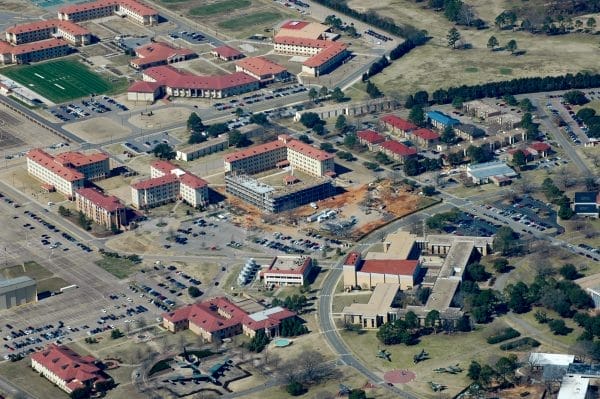 Maxwell Air Force Base
The county’s single leading employer is Maxwell-Gunter Air Force Base, which provides approximately 12,700 jobs. In 2003, Korean-owned Hyundai constructed a $1.1 billion automotive assembly and manufacturing plant just south of the city of Montgomery, bringing another 2,700 jobs to the county. Other leading employers include the state of Alabama, Baptist Health System, Montgomery Public Schools, ALFA Insurance Companies, the city of Montgomery, Jackson Hospital and Clinic, and Rheem Manufacturing Company.
Maxwell Air Force Base
The county’s single leading employer is Maxwell-Gunter Air Force Base, which provides approximately 12,700 jobs. In 2003, Korean-owned Hyundai constructed a $1.1 billion automotive assembly and manufacturing plant just south of the city of Montgomery, bringing another 2,700 jobs to the county. Other leading employers include the state of Alabama, Baptist Health System, Montgomery Public Schools, ALFA Insurance Companies, the city of Montgomery, Jackson Hospital and Clinic, and Rheem Manufacturing Company.
Education
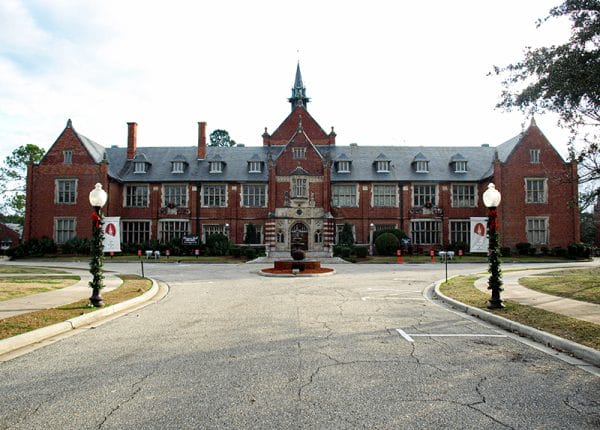 Flowers Hall
The Montgomery Public School System consists of all public schools in Montgomery County and 35 elementary schools, 11 junior/middle schools, and eight high schools. It is estimated that about 17 percent of school-age children in Montgomery County attend private schools. Montgomery County is also home to a number of institutions of higher education, including Alabama State University, a historically black institution founded in 1867 by former slaves in Marion, Perry County, and relocated to Montgomery in 1887; Auburn University at Montgomery (AUM), a metropolitan campus of Auburn University created by the Alabama Legislature in 1967; Huntingdon College, a Methodist-affiliated liberal-arts college founded in 1854 in Tuskegee and relocated to Montgomery in 1910; Faulkner University, a Christian liberal-arts school founded in 1942 and formerly known as Alabama Christian College; and Jones School of Law, founded in 1928 by jurist Walter B. Jones (son of Alabama governor Thomas Goode Jones) and now associated with Faulkner University.
Flowers Hall
The Montgomery Public School System consists of all public schools in Montgomery County and 35 elementary schools, 11 junior/middle schools, and eight high schools. It is estimated that about 17 percent of school-age children in Montgomery County attend private schools. Montgomery County is also home to a number of institutions of higher education, including Alabama State University, a historically black institution founded in 1867 by former slaves in Marion, Perry County, and relocated to Montgomery in 1887; Auburn University at Montgomery (AUM), a metropolitan campus of Auburn University created by the Alabama Legislature in 1967; Huntingdon College, a Methodist-affiliated liberal-arts college founded in 1854 in Tuskegee and relocated to Montgomery in 1910; Faulkner University, a Christian liberal-arts school founded in 1942 and formerly known as Alabama Christian College; and Jones School of Law, founded in 1928 by jurist Walter B. Jones (son of Alabama governor Thomas Goode Jones) and now associated with Faulkner University.
Geography
 Montgomery County Map
Montgomery County is located in the south-central part of the state within the Coastal Plain physiographic section and encompasses 793 square miles. The Alabama and Tallapoosa Rivers form its northern boundaries with Autauga and Elmore counties. It is bounded on the east by Macon and Bullock Counties, on the south by Pike and Crenshaw Counties, and on the west by Lowndes County.
Montgomery County Map
Montgomery County is located in the south-central part of the state within the Coastal Plain physiographic section and encompasses 793 square miles. The Alabama and Tallapoosa Rivers form its northern boundaries with Autauga and Elmore counties. It is bounded on the east by Macon and Bullock Counties, on the south by Pike and Crenshaw Counties, and on the west by Lowndes County.
Montgomery County’s main transportation routes are Interstate Highway I-65, which runs north-south, and I-85, which runs east-west. Other routes in the county include U.S. Highways 31, 231, 331, 80, and 82. All of the county’s major transportation routes run through the city of Montgomery. Montgomery Regional Airport, located six miles southwest of the city of Montgomery, supports four domestic air carriers and provides facilities for the Alabama Army and Air National Guard.
Events and Places of Interest
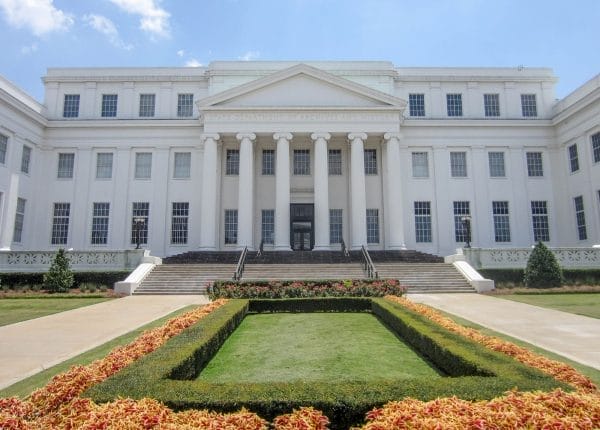 Alabama Department of Archives and History
Montgomery County offers numerous recreational and cultural activities. The city of Montgomery has 19 city parks, including Oak Park, which is home to the W. A. Gayle Planetarium. Lagoon Park Golf Course is a par-72 championship course that is open year-round. Montgomery’s Riverwalk Stadium is home to the Montgomery Biscuits, an affiliate of the Tampa Bay Rays baseball team.
Alabama Department of Archives and History
Montgomery County offers numerous recreational and cultural activities. The city of Montgomery has 19 city parks, including Oak Park, which is home to the W. A. Gayle Planetarium. Lagoon Park Golf Course is a par-72 championship course that is open year-round. Montgomery’s Riverwalk Stadium is home to the Montgomery Biscuits, an affiliate of the Tampa Bay Rays baseball team.
The Civil War and the civil-rights movement provide many sites for tourists, from the First White House of the Confederacy to the Dexter Avenue King Memorial Baptist Church. Both Jefferson Davis and Martin Luther King Jr. gave historic speeches from the front of the state capitol building.
 1950s Montgomery Bus
Other sites of interest in the county include museums dedicated to such diverse figures as Hank Williams Sr., Rosa Parks, and F. Scott and Zelda Fitzgerald. Montgomery County is also home to the Alabama Shakespeare Festival, which draws more than 300,000 visitors annually from all over the world. The Montgomery Museum of Fine Arts is located next to the Shakespeare Festival within the Winton M. Blount Cultural Park and contains paintings from such artists as Rembrandt, Goya, and John Singer Sargent. The Montgomery Zoo features animals from all of the world’s continents and also includes a miniature train, a sky lift, a playground, and dining facilities.
1950s Montgomery Bus
Other sites of interest in the county include museums dedicated to such diverse figures as Hank Williams Sr., Rosa Parks, and F. Scott and Zelda Fitzgerald. Montgomery County is also home to the Alabama Shakespeare Festival, which draws more than 300,000 visitors annually from all over the world. The Montgomery Museum of Fine Arts is located next to the Shakespeare Festival within the Winton M. Blount Cultural Park and contains paintings from such artists as Rembrandt, Goya, and John Singer Sargent. The Montgomery Zoo features animals from all of the world’s continents and also includes a miniature train, a sky lift, a playground, and dining facilities.
Further Reading
- Blue, M. P. A Brief History of Montgomery. Montgomery, Ala.: T.C. Bingham & Co., 1878.
- Williams, Clanton W. The Early History of Montgomery and Incidentally of the State of Alabama. Tuscaloosa: University of Alabama Press, 1976.
External Links
- Montgomery County
- Montgomery Public Schools
- Montgomery City-County Public Library
- City of Montgomery
- Montgomery Area Chamber of Commerce
- National Register of Historic Places: Montgomery County
- Auburn University at Montgomery
- Alabama State University
- Huntingdon College
- Faulkner University
- Maxwell Air Force Base
- Dexter Avenue King Memorial Baptist Church
- Alabama Shakespeare Festival
- Montgomery Museum of Fine Arts
- Montgomery Zoo
- Montgomery County Historical Society
- Hank Williams Museum
- First White House of the Confederacy
- Fitzgerald Museum
- Civil Rights Memorial
- Troy University Rosa Parks Museum



